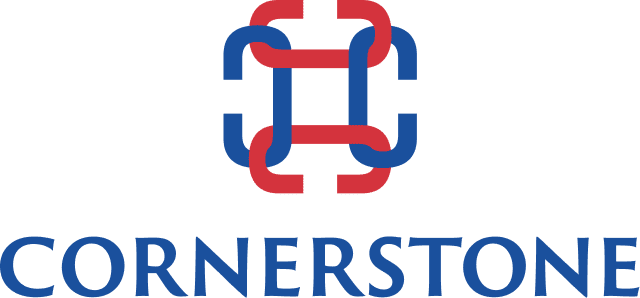Economic Shifts Threaten Family Businesses
The majority of the world’s wealth is created by family owned businesses.
Estimates suggest that these businesses — majority owned by a single family — may contribute over 70% of the world’s GDP. They deliver a superior return on assets in the U.S. (+6.5%), even more in Europe (+8%).
But the current economic stress created by the coronavirus pandemic has exposed fault lines endangering continued prosperity and growth in the sector.
Nowhere is this of greater concern than In the Middle East, where family business groups contribute 60% of the GDP and, according to a recent PWC survey, where a whopping one Trillion USD is expected to be transferred to next-generation family members over the next 10 years.
Let’s take a closer look.
THE CHALLENGE
Navigating in times of adversity calls for leadership resilience, organizational creativity, and alignment behind new strategic objectives. Downturns such as we are currently experiencing are times when a company can try new things to stay relevant to a changing world.
However, some family businesses are missing out on opportunities during these times of colossal consumer behavior shifts, due to few old habits. Here are two.
First Fault line: micromanaging
Regional subject matter experts suggest that governance in some family businesses needs further improvement. A common challenge is when family members or some of the board members are micromanaging the CEO or other C-Suite officers.
This results first in the latter ineffective utilizing their competencies in driving Business Plan execution or defining future strategy. Second, If this reputation becomes attached to the company, it may prevent it from attracting top-caliber CEOs and C-suite members. Third, corporate culture is impacted, and promoting relationships over merit can affect critical decision-making during TUNA (turbulent, uncertain, novel, and ambiguous) times.
That results in a specific breed of leaders that survive in some of these groups, where they execute more often the wishes of others rather than by taking advantage of their valuable experiences and leadership skills to guide the company.
Second Fault Line: Risk Aversion
Some regional family groups tend to embrace a more conservative strategic outlook moving forward. According to Hofstede (a global scholar on national cultures), countries in the Gulf Cooperation Council (GCC) tend to score high in risk-averse ratios. Add to this the fact that many family businesses in the GCC are in traditional sectors such as distribution, retail and real estate and only a small number has explored opportunities in the new economy (e-commerce, cybersecurity, digital payments, digital health, biotech, streaming subscription media, etc) they find today themselves in a difficult spot.

STRATEGIC IMPERATIVE:
Key strategic objectives for a family business to amplify its state of resilience and achieve sustainable results could include the following:
- Sustainable Growth: Achieving healthy finances is a two-way key success factor. In our opinion designing the right strategy forward and having it executed in a robust manner, can affect the outcome of sustainable growth. One core pillar to design and execute a business plan is having the right people on top. An organization can have the best product/solution in the market, the best business model, and the best business plan but without the right leadership to execute it and a vigorous culture; there will not be sustainable growth.
Investing in top senior talent is a critical component for any type of company to achieve sustainable results. But will top talent work for a family group where pockets of the above two mentioned “derailing” habits still exist? Most probably not.
So the first key question here is how to attract the right talents moving forward. The second question is how to nurture, assess, reward, and retain top talent.
- Effective Governance: Transitioning to a more corporate-run model for the family business means “Chinese walls” between Board, Family, and Top Management to avoid bad decision-making, micromanagement, and other patterns detrimental to business continuity.
The CEO, supported by the C-Suite, designs a sturdy strategic foresight and executes effectively the Business Plan, while the role of the Board is to direct them to become the best they can be. The Board participates in the conversation to enable the CEO & C-suite to design an effective strategy and efficiently execute the strategic objectives and actions.
- Business Continuity: It is a more difficult task for some traditional businesses to navigate within a contemporary global economy. The key question is how to digitally transform the traditional business, and foster a culture of innovation in the family business.
The challenge is how to engineer that when older generations might not have the capabilities (technical knowledge and right behavior) to drive such a vision and empower the CEO into the new future.
- Effective Succession and Control of Business: Develop well-fit G2 or G3 members by reinforcing their capabilities (both technical, leadership, and behavioral in the new norm) to succeed G1 and assume ownership responsibility for the legacy business. In summary, some key objectives for the G2 and G3 family members could be exemplified as follows:
- Growth: maximizing financial value,
- Liquidity: better cash flow,
- Control: keep with ownership and avoid outside equity or debt
THE WAY FORWARD:
Inability to tackle decisively the previously mentioned “fault lines” could have a detrimental effect on the continuation of any regional family business; especially after the recent gigantic changes in consumer behaviors, that were augmented by the global pandemic.
We strongly believe that securing top senior talent, forgoing the micromanaging tactics, and fostering a more innovative culture by the board and/or family members, could safeguard a better future for the family business.
A critical fix here is to design a robust succession planning blueprint for the family. Informed/educated owners should hire board members and non-executive directors based on merit, not on family relationships, and then a stalwart board will hire a good-fit CEO to lead the firm to the next level. In summary, the board’s fiduciary duty should be to elevate top management to the next level rather than to micromanage it.
In Cornerstone International Group (Middle East Practice) we have a solid senior team with more than 100 years of leadership experience in the region, to effectively design a dedicated succession planning model. Our certified master coaches (ICF) can augment the capabilities of the G2/G3 members: we are highly competent to assess and identify their potential and conduct a training needs analysis.
Second, we have excellent project management skills in executing one- or two-year succession planning programs and effectively mentor and navigate family members during these turbulent times.
Finally, understanding shifts in consumer behaviors and realigning leadership doctrines with new behaviors is a critical tacit knowledge that we have developed in Cornerstone Middle East, so to be able to recruit the right-fit senior talent for the family groups.


